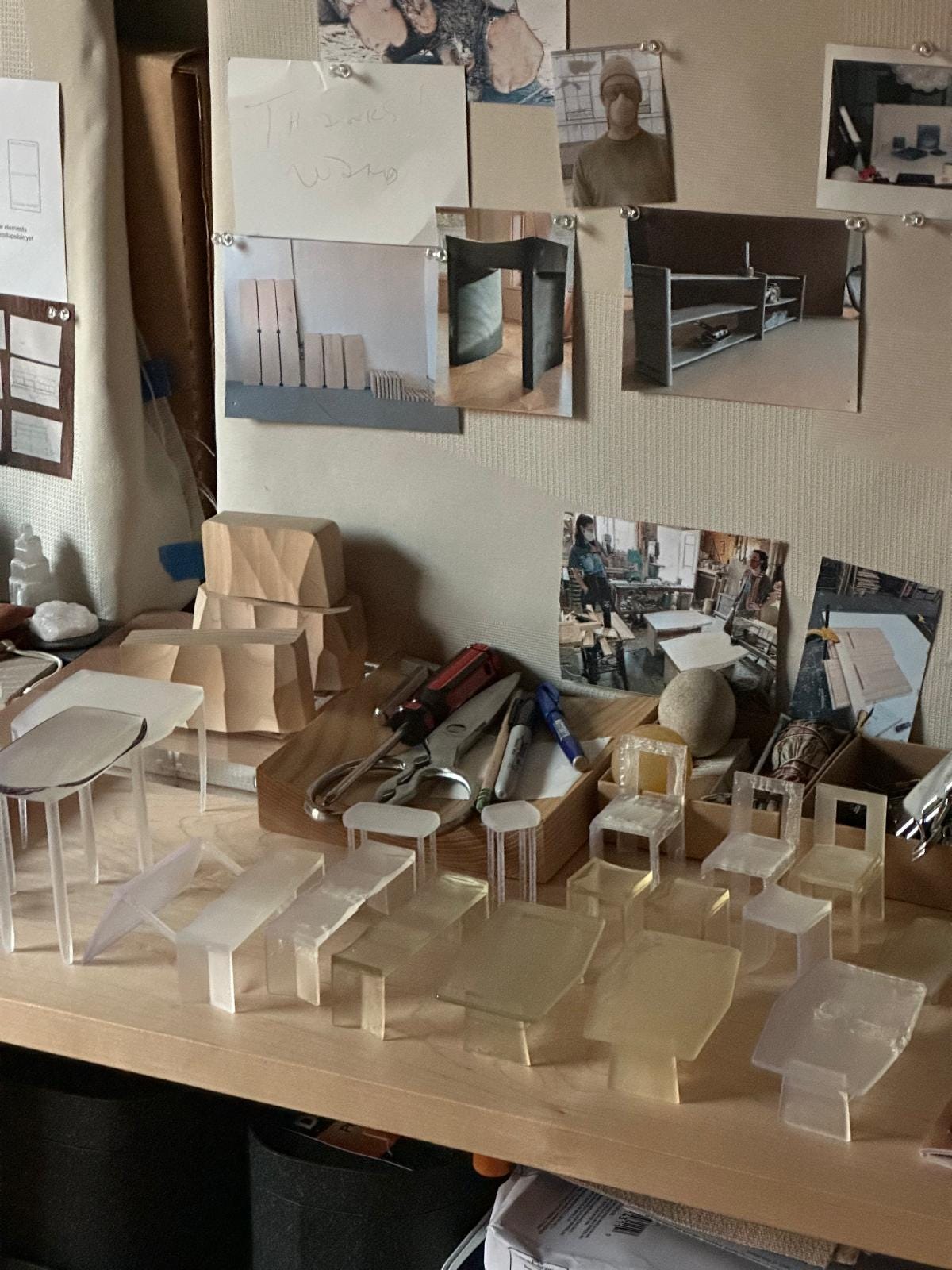Trust the Process
Despite the wealth of digital tools available today, iterating through physical models remains an indispensable way for designers to land on their next big idea.
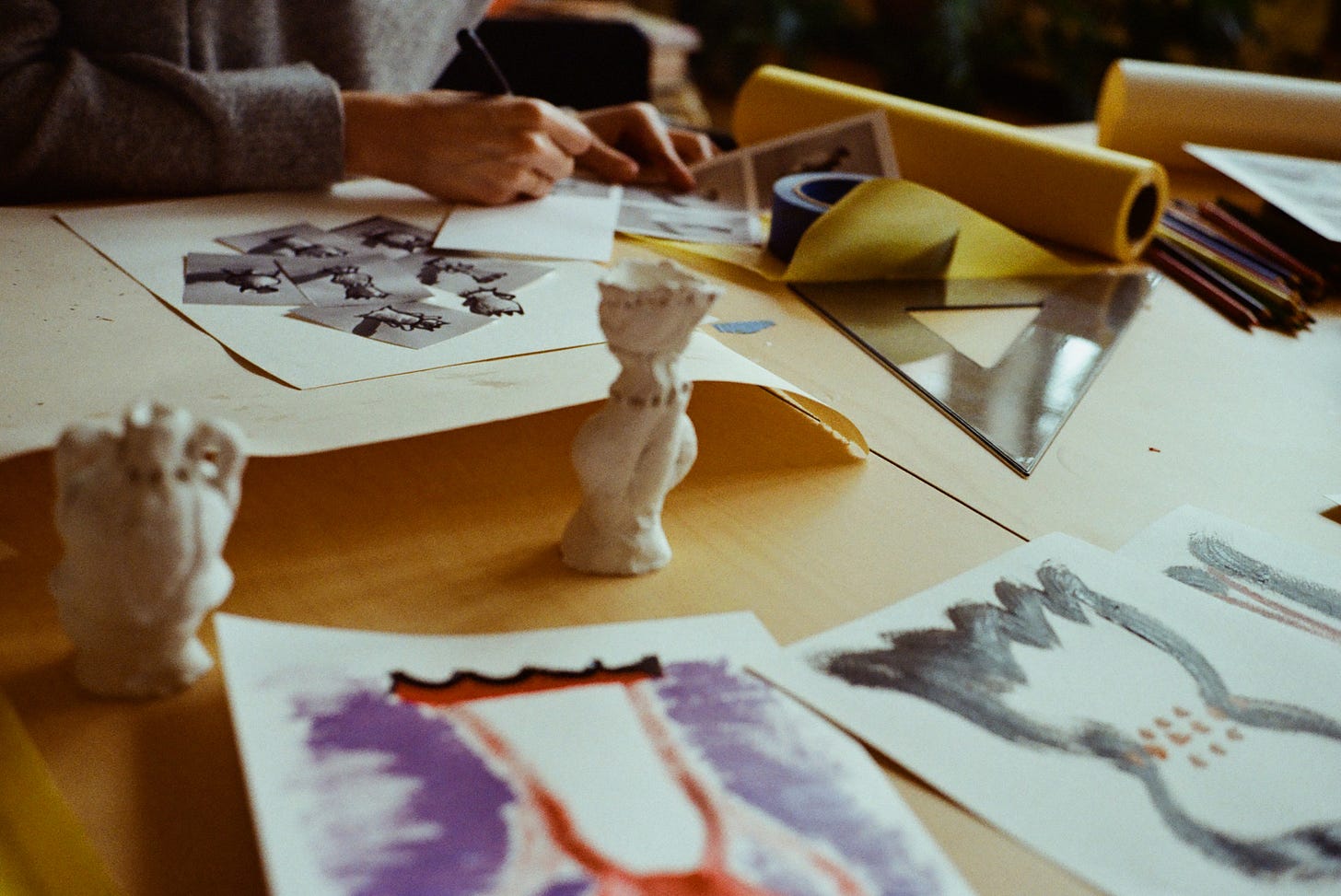
Written by Diana Budds
Designers rarely agree on matters of style, but one resounding place of alignment is that making is an iterative act. The “napkin sketch” is a myth: Arriving at the beautiful pieces we see in galleries and showrooms requires trusting the process—one that is filled with trial and error, improvisation, and refining.
But the process itself is changing. From 3D modeling to AI image generators and even VR sketching, there are more new tools than ever to aid creative flow and help bring whatever’s in a designer’s mind into the real world. Still, for many, there is no substitute for the good, old-fashioned physical scale model to test and build upon an idea, whether it’s a makeshift maquette composed of scrappy materials or a high-fidelity miniature. They serve as signposts for where an idea has been, a means of effectively communicating with collaborators and customers, and even keepsakes—mementos for when the real thing leaves the studio for its forever home.
“Making a model allows me to literally feel my way in designing the piece,” says Russell Pinch, cofounder of the British furniture company Pinch. He typically makes 1:5 maquettes out of balsa wood once a pencil drawing feels like it has potential. “Digital modeling is brilliant but seeing a piece through a screen is not the same as feeling the piece in your hands—there is nowhere to hide!”
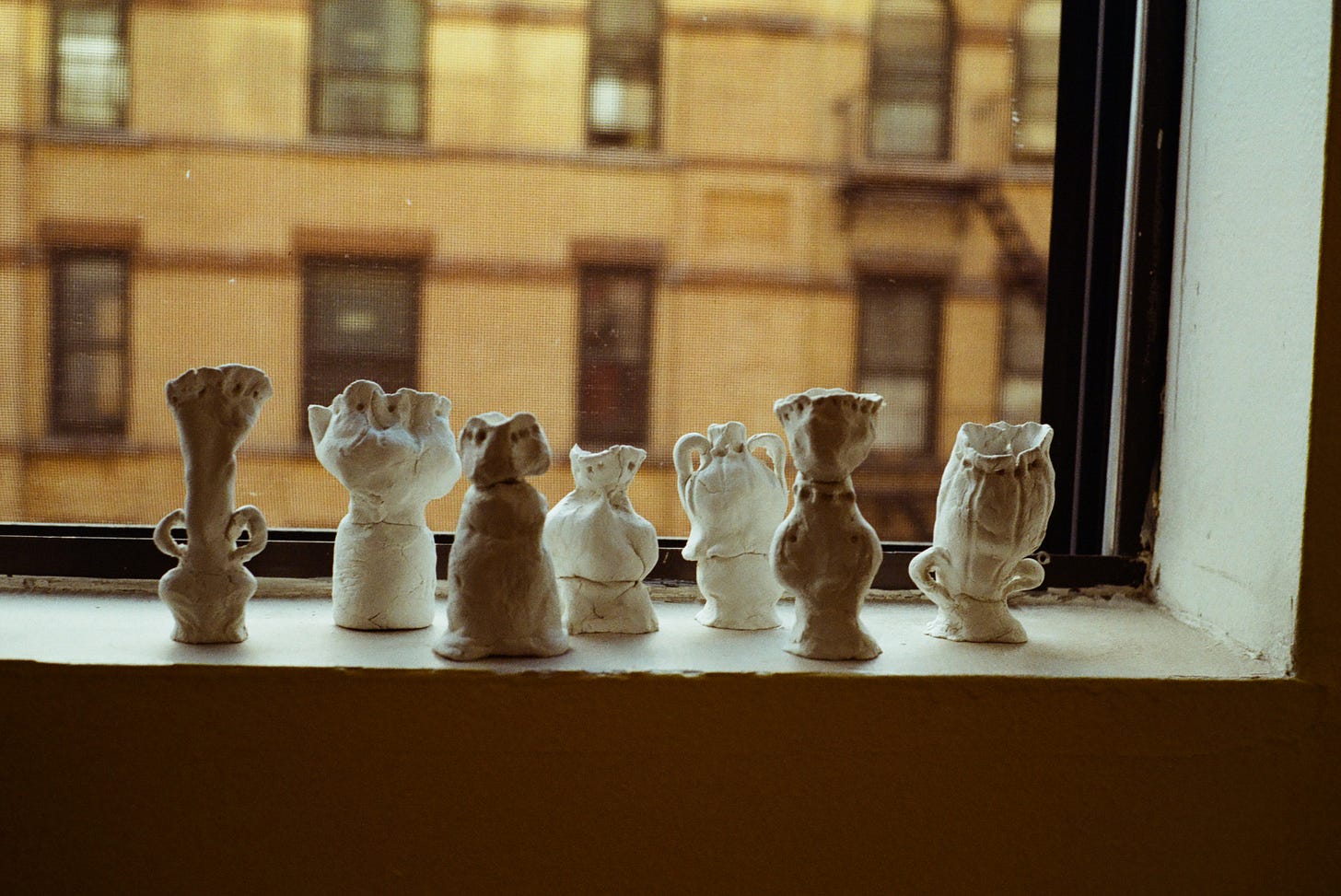
For Kiki Goti, a New York–based designer and educator, models are critical because her practice is rooted in exploration and investigation across narratives and materials. “The relationship of process with storytelling is super important for the cohesive development of the work,” Goti says. This is especially true of Graces, a series of ornate, sculptural Murano glass vessels inspired by the women in her family, which she showed at Alcova in Milan earlier this year. She initially sketched the forms for them in a 3D modeling program, but felt like the renderings were too sterile. Going back to basics, she switched to clay—a material she likes for its malleability—and took photos of the models, drawing over them in marker to represent how glass could be layered onto the designs. The spontaneity continued when Goti worked with glassblowers in Venice, who used techniques she compares to live drawing during fabrication. “With the unpredictability, they had this attitude of my clay models,” she says. “They ended up having these weird, quirky bodies.”
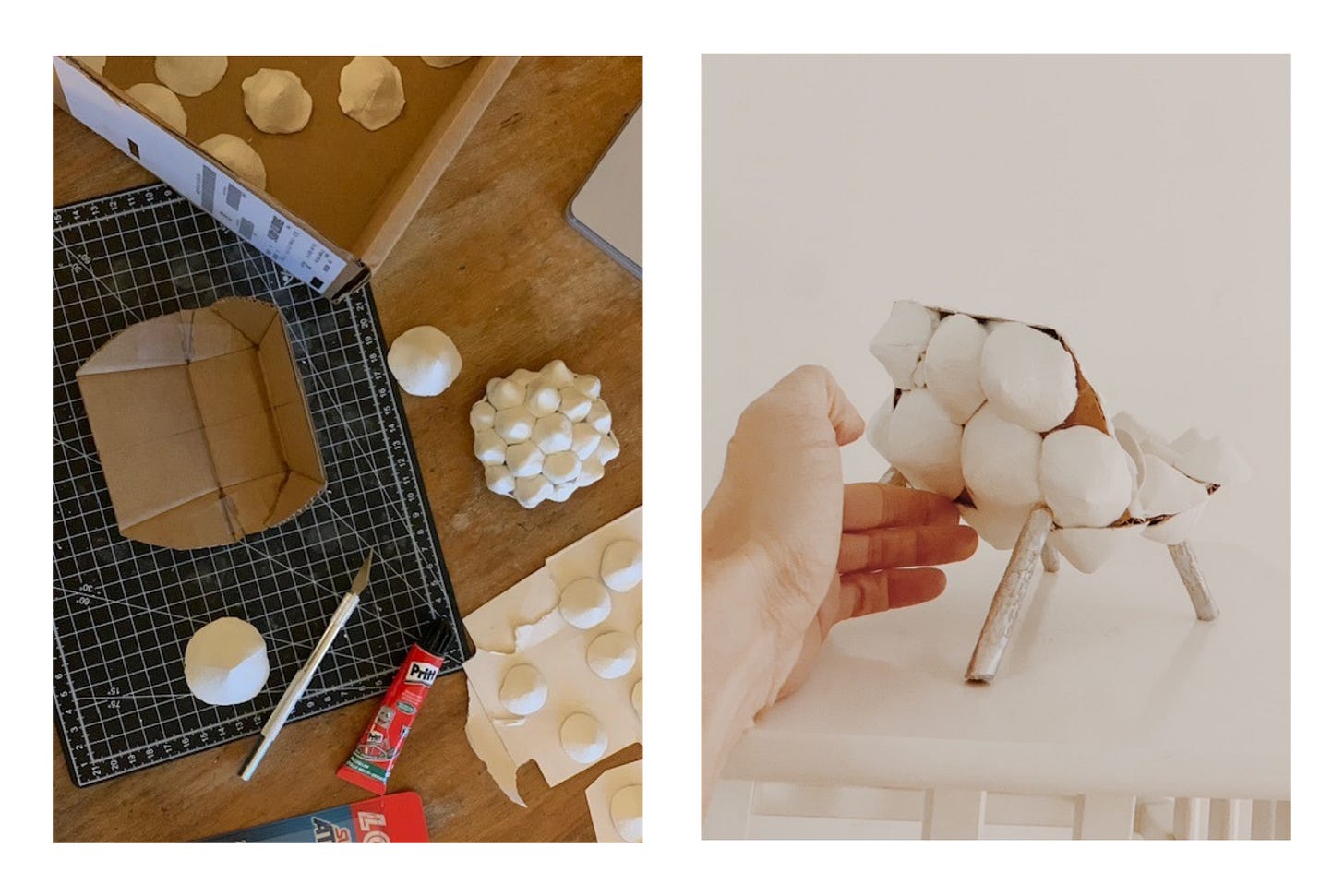
The generative capacity of models is why Whitney Krieger, interior designer and founder of the studio Soft Witness, makes them. To her, maquettes are useful for understanding when a concept is fleshed out enough to prototype. To perfect the ergonomics and proportions of her Cono chair, a plush piece whose spiky silhouette nods to romanesco cauliflower, she made a simple cardboard model to determine its angles and then made hundreds of tiny air-dry clay cones, which she glued to the frame to determine their ideal size. She tinkered with the model—a larger cone here, a smaller cone there—then set it on her shelf. “I pretend they’re like an accessory,” Krieger says. She lived with it for over a year before she began prototyping at full scale, observing details about its shape and tweaking them periodically. “It’s like when you have art on your wall and you notice something different about it,” she says. “I can analyze it in a natural way.”
Thomas Yang, a designer based in New York, also lives with his models. “It’s this way of testing the balance of the object in real space, with lighting and air particles and the feeling of it existing,” he says. Yang recently used a physical model to see how subtle shifts in airflow—from fans and people walking by—would animate his Tian Den sconce. While it’s possible to replicate in a digital rendering with a lot of time and attention, “there’s more wonder in creating models,” Yang says. While the model worked out for Tian Den, sometimes, he notes, the exercise is just as valuable when it doesn’t. After living with the models and deciding that an idea doesn’t hold water, he’ll use them as a springboard for something altogether new. An experiment making stone brushes, in which he carved wood to fit the contours of river pebbles, eventually became his stone stool rockers; he’s now making a bistro table using a similar idea.
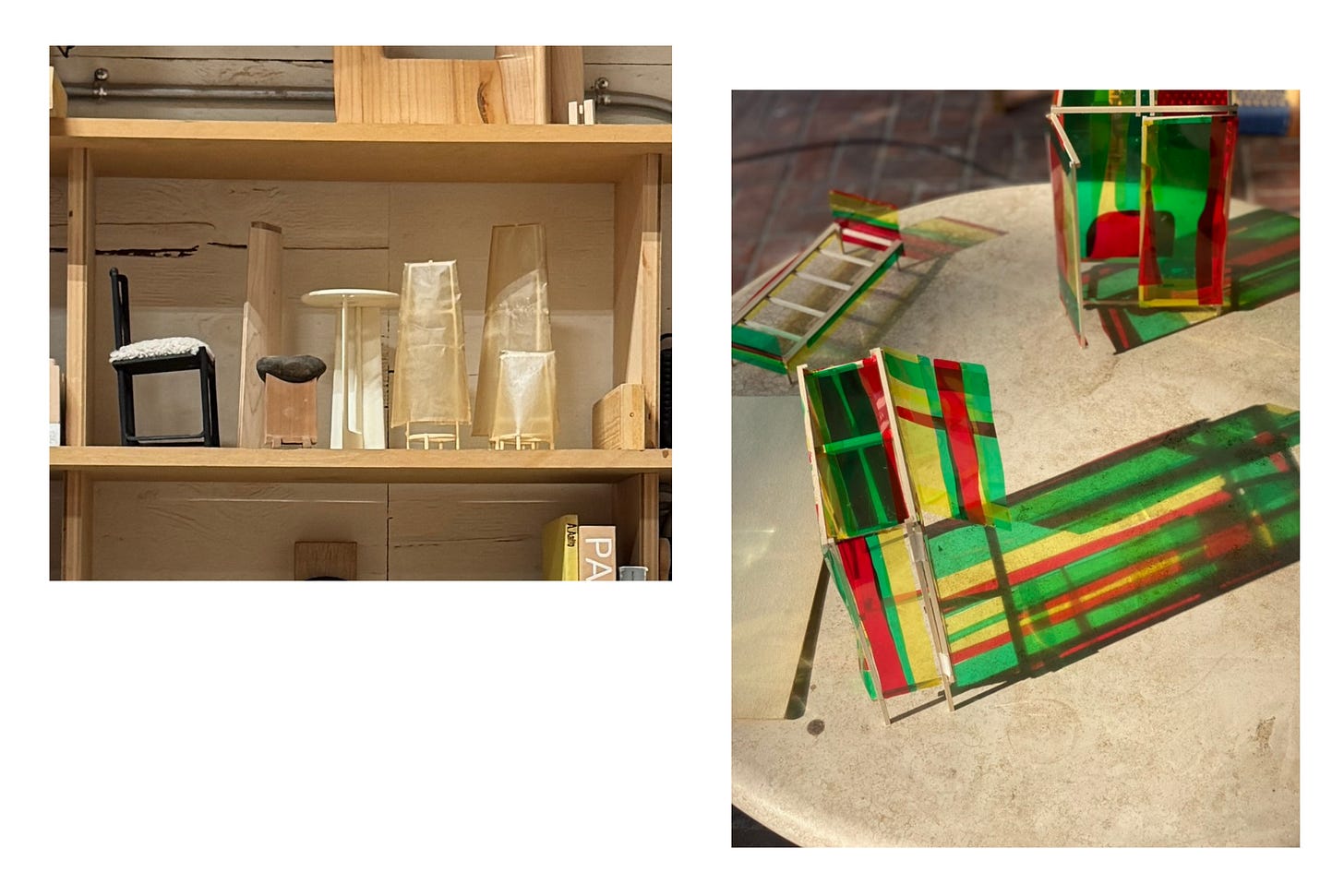
Jennifer June, founder of the Hudson Valley–based modular furniture brand Loose Parts, has a background in printmaking and book arts—so starting with tangible materials came naturally to her. She’ll quickly join together paper, wood, and veneers as “tactile sketches” that live on her shelves. Recently, she’s been layering recycled acrylic from Italy over models of her wood frames, though she’s not exactly sure what these experiments will lead to. “I loved the way the light passed through the layers, almost like the structure was holding light rather than just space,” June says. “I haven’t turned those studies into full pieces yet, but I’ve been thinking about them again lately. The idea of transparency and a skeletal frame with modular surfaces keeps resurfacing.”
Obsessing over a model led to designer Drew Seskunas’s latest work—a motorized, geometric metal plate that folds into itself—which he exhibited at “Table Top,” a group show of conceptual tableware curated by Alan Wexler and Michael Yarinsky. Before it was tableware, though, it began as an idea for a collapsible roof—an idea that petered out when scaling the kinetics proved challenging. He then tried to use the system for a solar-powered robot, and that didn’t quite work, either. But it was successful at the scale of a plate. “I have a hard time letting go of some of the systems I design, so eventually I find outlets for them,” Seskunas says.
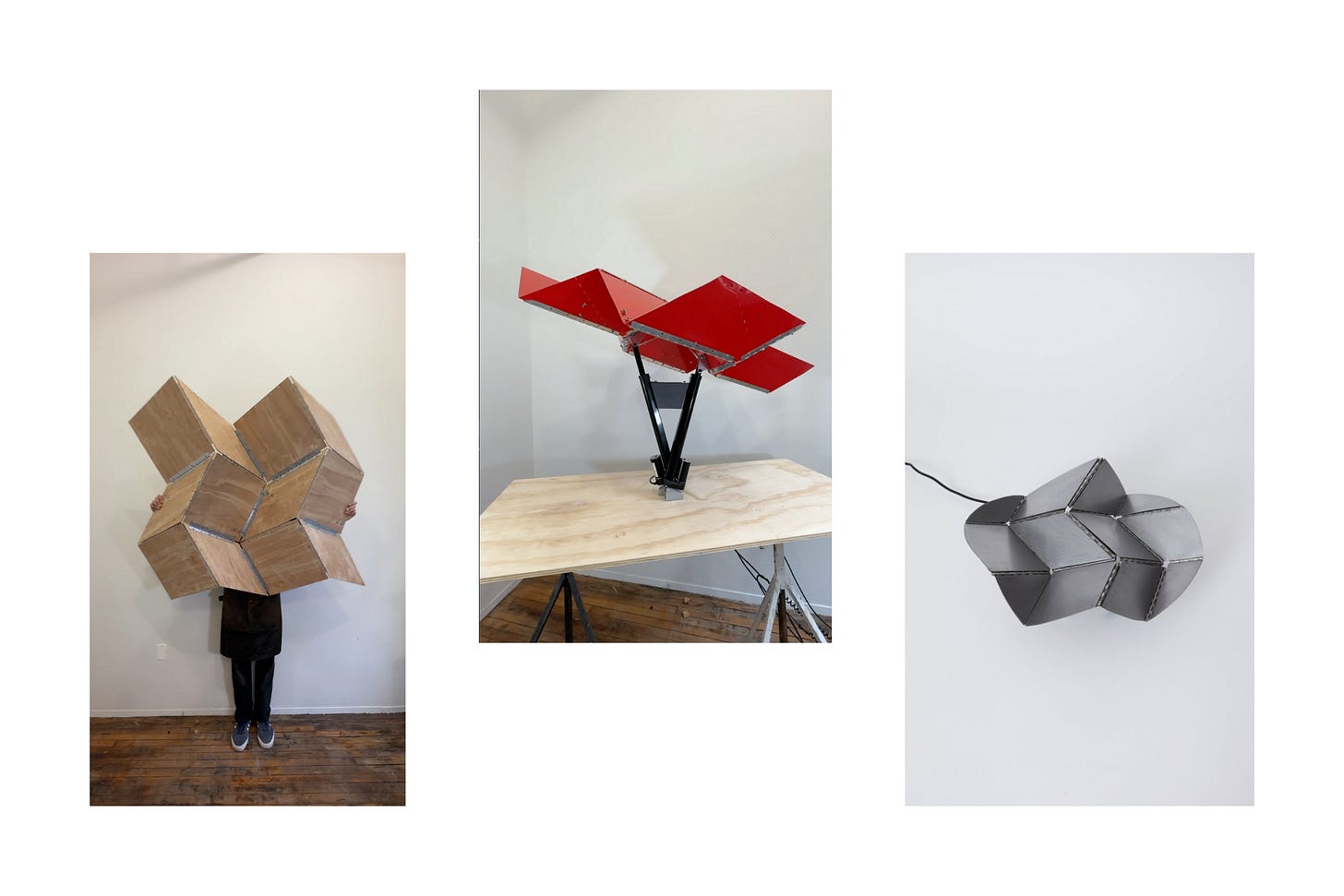
And for some designers, there simply aren’t any other viable alternatives to the maquette. “Models are my main way of ‘sketching’ designs partially because I'm bad at drawing, but also because my brain just comprehends 3D better,” says Hanneke Lourens, a woodworker based in California. Using thin pieces of scrap plywood—a material she prefers over cardboard, as it’s better at holding its shape while still being easy to sculpt—she makes (and breaks apart) hundreds of maquettes when she develops a collection.
Beyond ideation, models are also easy conversation starters with the other parties involved in the lifecycle of a piece. “Because I often need to seek out expert help for projects, where I’m entering new skills territory, these kinds of tools really help to gain people‘s attention and enthusiasm,” says Ruth Kneass, an artist based in the San Francisco Bay Area. She carved wood models to share with a marble fabricator who collaborated with her on a recent sculpture. “I find that through the aid of my maquettes, I experience a gracious willingness of these experts to get involved, share wisdom and expertise, and often become very integral to my creation process.” Juntos Projects, a New York–based furniture maker, often displays their 3D-printed resin models, which they use for prototyping, next to their full-scale companions. At ICFF, Juntos Projects exhibited paper models, suspending them from a Shaker-style pegboard on the walls of their booth. “We found that it invites people to look closer, ask more questions, and see details that could otherwise get lost in a sea of products,” says cofounder María Daniela Huiza.
When Pinch launched in the United States 15 years ago, it was cost prohibitive to ship the brand’s entire line stateside, so Russell hired his father, an expert model maker, to produce high-fidelity scale models that he couldn’t display at scale. Small objects were more effective than photographs and diagrams to communicate the work. Since then, models have become a signature of the studio. “We take them to meetings and they are on display in all of our spaces,” Russell says. “They represent our creative process but they also allow us to show more breadth of our offering—and everyone loves a scale model.”
Despite the usefulness of a physical maquette for practicing designers, it’s a tough sell for students who have grown up in the digital world. Seskunas, who teaches a model-making class for industrial design MFA students at Parsons, says that his students “typically avoid it like cats to water at first.” He’s noticed that they spend so much time refining a digital model that it’s too late to redirect an idea. He encourages them to slowly scale up physical models in order to develop a close connection between materials and fabrication methods “so the end result is efficiently made, useful and ultimately valuable to the end user,” he says. (The designers interviewed for this story ranged in age from 20s to 60s—Yang, for one, graduated with a BFA in 2023.)
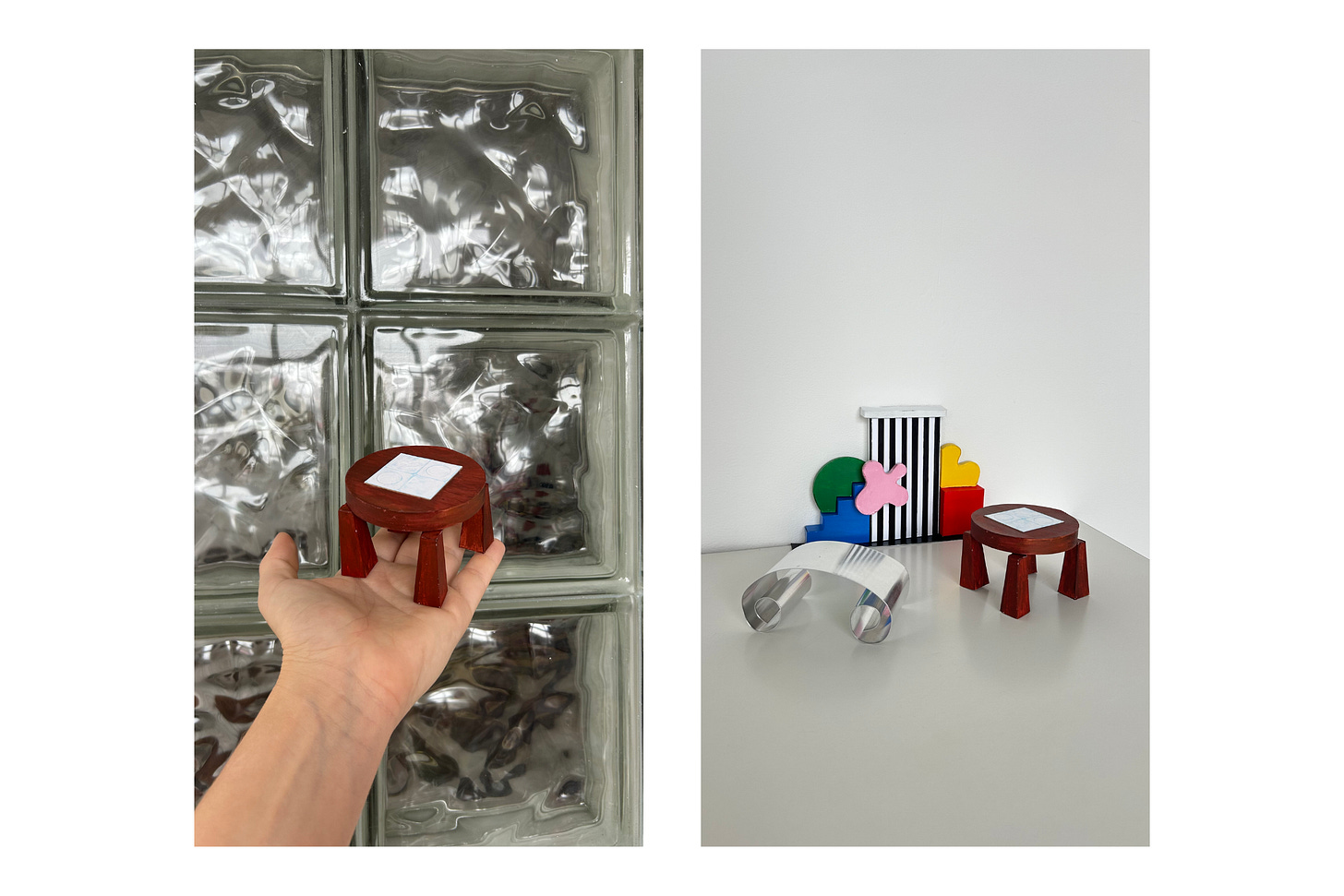
And then there is the play factor. According to designers I spoke with, you can’t ignore that it’s simply a lot of fun to work with your hands—clicking a mouse or tapping on a touchscreen doesn’t compare. “There is nothing more thrilling than returning to my design school days and whittling away at cardboard and cardstock with an X-Acto for several straight hours—genuinely,” says Sophie Collé, a furniture designer in Brooklyn. She recently got back into the practice of making scale models after changing the structure of her business to take on more custom work and outsource fabrication of her production pieces. She’d typically start by building pieces at full scale to develop her own line—but for client work, all details and intricacies must be approved beforehand, and models help. It’s also an act of remembrance: She makes miniatures of completed works for her own archive, keeping them in dollhouse-like displays alongside miniatures she has from old Barbie kits and vintage shops. “In a more romantic sense, it's really nice to revisit old work and get nostalgic and see how far you have come—for me at least,” she says. ⌂



